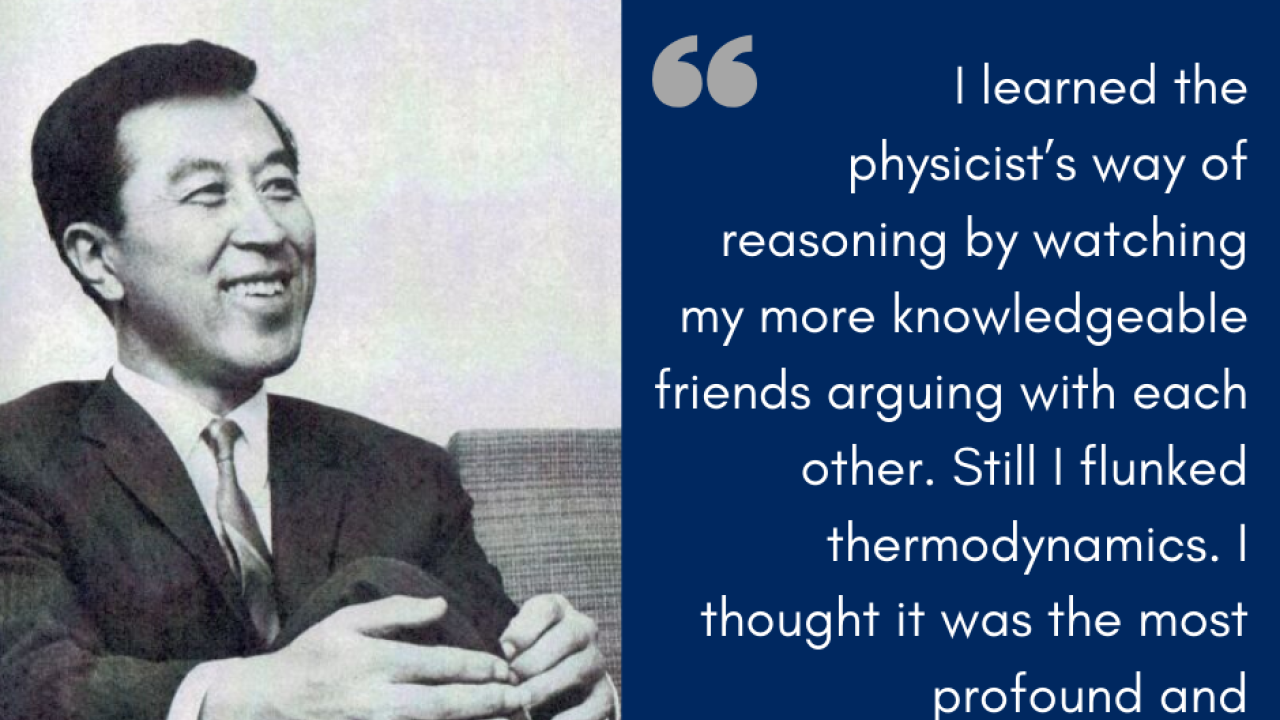
Why be a scientist? Nearly every scientist has a different answer and a different inspiration, drawn from varied careers, outlooks, and experiences. For its 40th anniversary in 2004, ICTP published the book One Hundred Reasons to be a Scientist, a collection of 100 essays from many eminent physicists and mathematicians with a connection to ICTP. The book is a source of many insights from the lives and careers of scientists, including Helen Quinn, Freeman Dyson, Vera Rubin, and Francis K.A. Allotey. The authors discuss what led them to study science, the difficulties they encountered and overcame, and their passions and hopes for the future.
We are revisiting twenty of these stories highlighting one of them every week, sharing inspirations from the essays and showcasing the words of these great scientists. During the uncertainty of the current global pandemic, the words will hopefully help researchers feel less alone in their scientific path.
We are presenting this week the story of Yōichirō Nambu, a Japanese-American physicist and professor at the University of Chicago. He is best known for the discovery in 1960 of the mechanism of spontaneous broken symmetry in subatomic physics, for which he was awarded the Nobel Prize in Physics in 2008.
From his childhood in a provincial town in Japan, spent reading science books and building a radio from scratch, you can read his story here.
If you want to learn more about Professor Nambu, you can watch his Nobel lecture here. He was also awarded the Dirac Medal at ICTP in 1986.
Finally, if you are interested in learning about 99 more scientists and what inspired them, you can find the whole book in electronic format for free download on ICTP’s library website.
Here you can read the previous stories:
















